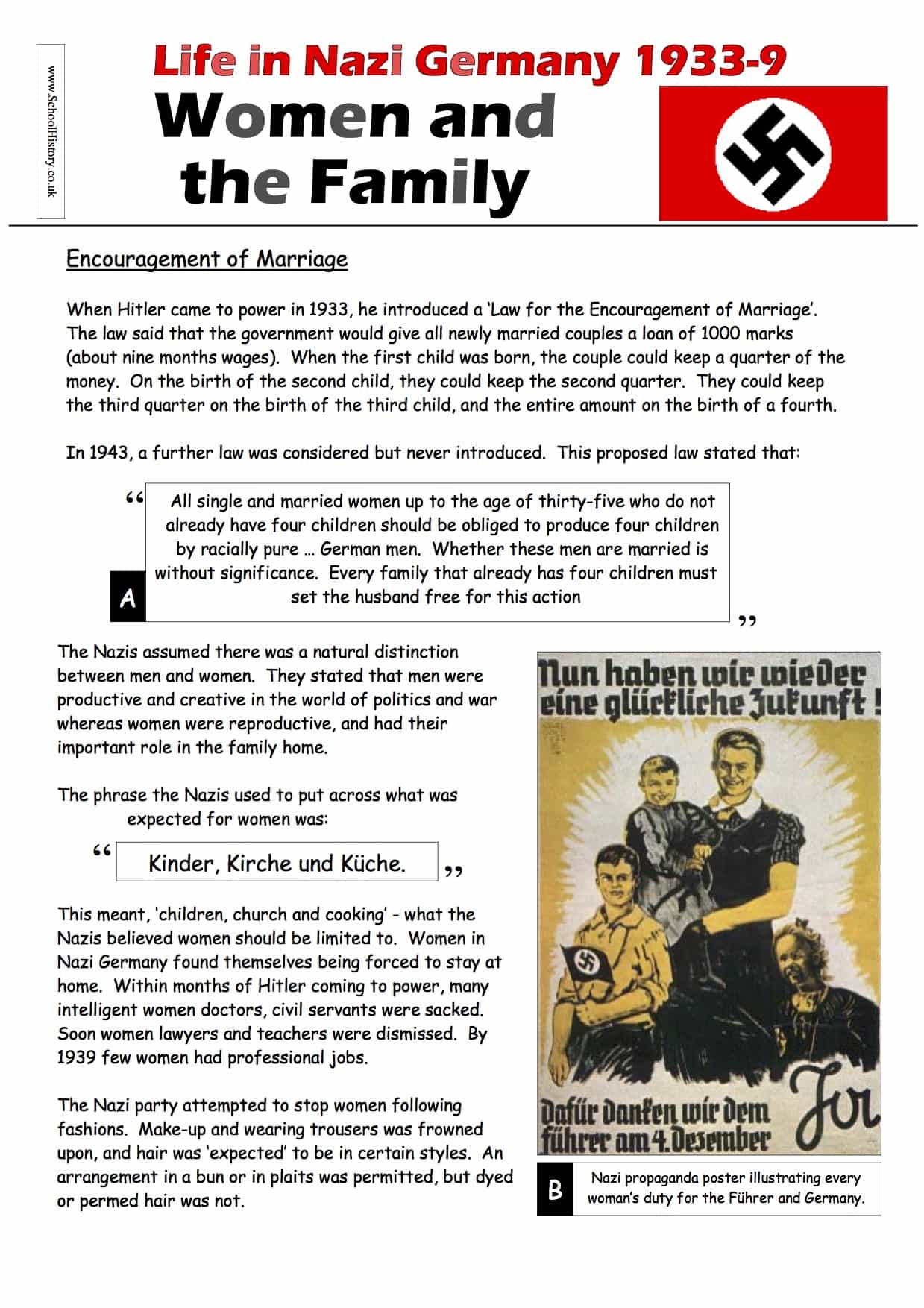Download Women in Nazi Germany
Click the button below to download this worksheet for use in the classroom or at home.
Download →
Encouragement of Marriage
When Hitler came to power in 1933, he introduced a ‘Law for the Encouragement of Marriage’. The law said that the government would give all newly married couples a loan of 1000 marks (about nine months wages). When the first child was born, the couple could keep a quarter of the money. On the birth of the second child, they could keep the second quarter. They could keep the third quarter on the birth of the third child, and the entire amount on the birth of a fourth.
In 1943, a further law was considered but never introduced. This proposed law stated that:
All single and married women up to the age of thirty-five who do not already have four children should be obliged to produce four children by racially pure … German men. Whether these men are married is without significance. Every family that already has four children must set the husband free for this action.
The Nazis assumed there was a natural distinction between men and women. They stated that men were productive and creative in the world of politics and war whereas women were reproductive, and had their important role in the family home.
The phrase the Nazis used to put across what was expected for women was:
Kinder, Kirche und Küche.
This meant, ‘children, church and cooking’ – what the Nazis believed women should be limited to. Women in Nazi Germany found themselves being forced to stay at home. Within months of Hitler coming to power, many intelligent women doctors, civil servants were sacked. Soon women lawyers and teachers were dismissed. By 1939 few women had professional jobs.
The Nazi party attempted to stop women following fashions. Make-up and wearing trousers was frowned upon, and hair was ‘expected’ to be in certain styles. An arrangement in a bun or in plaits was permitted, but dyed or permed hair was not.
Slimming was discouraged because being slim was not thought to be good for childbearing. The only thing women were actively encouraged to do was to have children. Every 12th August, the birthday of Hitler’s mother, the Motherhood Cross was awarded to the women who had the most children. In 1938, gold was awarded to those who had eight children, silver for those with six and bronze for those with four children! Some local authorities introduced rent, water or electricity rebates for large families.
The Nazi government even set up homes for unmarried mothers. These were called Lebensborn – Spring of Life – and recognised by a white flag with a red dot in the middle. These maternity homes were also brothels. An unmarried woman could go there with the aim of becoming pregnant and would be introduced to ‘racially pure’ SS men.
PDF Worksheet:
-
- Aimed at Students studying at between year 9 & GCSE or equivalent
- Free to download
- Use as you wish in the classroom or home environment
- Information sheet and challenging tasks.
